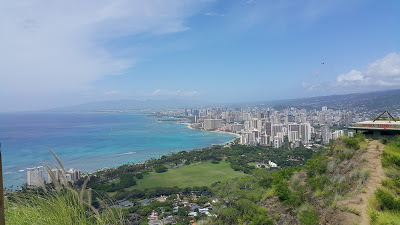Or: Pole Dancing Lions are Pretty Impressive
As with every Chinese New Year (CNY) for the past six or so years, I have left my usual residence to experience another area’s festivities. Usually that area is Shanghai. This year, it’s Sha Tin (or Shatin depending on your spellchecker’s preference).
Shanghai has usually been selected as it’s a fabulous city whose population significantly decreases over this period due to a large portion of residents being from elsewhere in China. Chinese New Year is the time of the year of mass migration in China as most return to their family / ancestral homes. Shanghai has few of those relative to the volume of residents it now accommodates. As a result, this time of the year is a lot easier to get around Shanghai given there’s less people on the roads. The downside is less restaurants and facilities are also open. It’s a small price to pay to experience the city as it has some phenomenal architecture and an interesting history that is much easier to explore with fewer people around.
Hong Kong also experiences a similar internal migration though on a less intense scale. Probably because there’s only seven million people that live here compared to the 24 million (approx.) that live in Shanghai. Rather than moving over a massive tract of land like mainland China, people move over the various islands that make up Hong Kong to make their way back to their distant relatives.
This may come as a bit of a surprise to those who see Hong Kong as the tall buildings and bright lights of Central but Hong Kong actually has many local villages which are quite small and have housing that is no higher than three storeys. These villages also have their local village hall where wedding and funeral banquets as well as local Village Council meetings are conducted. Nearby there is typically farming and / or fishing which those remaining in the village do while some of their younger family members are working in places with the bright lights and living a little closer to the MTR.
Sha Tin is in Hong Kong itself and is on part of the mainland side. The area was built around 1574 and according to Wikipedia, was known as the source of clear water prior to British rule (that’s the translation of its former name of Lek Yuen. This is now that name of one of the estates in the area).
For the history buffs, in 1911, the first powered aircraft flew from here. The plane that hangs in the airport now is a full-size replica of this one.
From agricultural farmland to a market town to now be known for its racecourse and university, the area has gone through a massive transformation as a result of being designated as a “New Town” in the 1970s. The mid-1980s saw the Town Centre itself developed with the view to “link the town’s currently dispersed residents into one cohesive community.”
A hotel was also built. This is where I am at the moment.
This is not an area of HK that I visit regularly, it is more an area that I’ve gone through on the way to somewhere else, usually either Shenzhen, China or to Tai Po for the national park. Now that I’m here, I haven’t explored that much as yet partly due to the weather and partly due to the facilities in the hotel and knowing I can always come back to explore another time.
One of the things I like about this time of year is seeing the children in their new Chinese-style dress. It is always new clothing, never something that has been worn before, as it brings luck. Most things are about maximizing luck, good fortune and / or happiness during this time of the year. Sometimes it is also about minimizing bad luck.
To this end, the hotel featured a number of lion dance to help everyone with their good fortune for the Year of the Rooster. It included an eye dotting ceremony before one performed jumping across poles of various heights. Another danced through a lounge area, ate a lettuce, spat the leaves with all who were hit now having luck for the rest of the year. People tend to keep these leaves in a red packet / envelope and either carry them with them for the year or pin them to a workstation or somewhere prominent at their home. Somehow it doesn’t seem to cause an odor over the year.
Others will then step forward with their lai see (new money in red envelopes) to give to the lion. This is partly for luck and partly to say thanks.
For the rest of my stay, my plan is to cycle around the local lake and to see a statue that’s larger than the “Largest Seated Bronze Buddha In The World” (the Big Buddha at Lantau), weather permitting. I’ll also be doing some work and relaxing too. It’s a fine balance.
The Year of the Rooster is meant to be particularly good for the early risers. With this in mind, I wish you and your family all Kung Hei Fat Choi, early sleeps and pleasant dreams!
* Kung Hei Fat Choi is a Cantonese phrase typically used at this time of year and it’s a wish for the recipient to have prosperity / wealth in the year ahead. Most foreigners use it to mean Happy New Year though it’s not technically what it means. There’s a similar phrase in Mandarin which you may also be seeing all over social media at the moment. It’s the phrase most of us are more familiar with (rather than the literal translation for Happy New Year) as it’s the phrase that work colleagues and business associates share.


